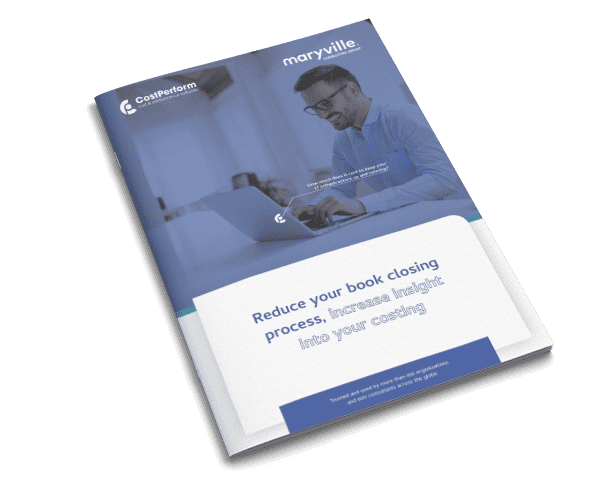A common question we receive at CostPerform is: Why buy a cost allocation tool instead of building one in-house? The answer really depends, but nothing comes without a cost. Think about your industry—does it demand specialized solutions? Do you have the in-house expertise to build sophisticated cost modeling software? Have you considered the long-term costs and potential pitfalls? Ultimately, the real question is: Which option delivers the most value for your business?
We’ve outlined 8 areas which should not be overlooked in calculating a decision. While these factors specifically relate to cost management software, the principles and methods in comparing COTS (Commercial Off The Shelf) solutions or bought products with in-house solutions for other purposes are quite universal. So, you might find this article insightful even if you are weighing a build vs buy decision in another business area.

Eight factors to consider in the build vs buy debate:
- Company Culture and History: How does your organization typically decide between building or buying software? There is always a practical limit to what can be done in-house. Organizations do not design all of their own PC equipment, furniture, marketing solutions and software. They may do some of these, but there is always a point where it’s best to outsource. Some companies have a strong history and a pride in keeping things in-house in areas near their core business model, particularly innovators; think Apple and Steve Jobs designing their own typeface for the first Mac. Not everyone is Apple however, the more practical approach may be to focus on your core strengths as an organization, and outsource everything else.
- Cost of Ownership: The total cost of owning your build vs. buy options have to be fully assessed to weigh the benefits. These can be divided into:
• One-off costs: Upfront costs such as the initial infrastructure set-up, or opportunity cost of in-house resources.
• Long-run costs: these can include ongoing maintenance and training costs.
There may be hidden costs of purchasing a software product. It’s important to be aware if the software you are purchasing contains any hidden costs further down the line. In the case of CostPerform, our pricing can be viewed here, and we value transparency. There may also be a whole host of hidden costs related to taking on a software build of your own, as point three lays out:
- Unforeseen complexities: Projects will often hit unforeseen roadblocks, or there is a risk that the built solution does not live up to expectations. Off-the-shelf solutions will generally provide advance certainty on what you can accomplish. They also win on providing more clarity on when you can do it, as an in-house project will be exposed to delays, integration issues, or technical debt. Finally, a built solution can generate a lot of problems if it is dependent on a single employee who leaves the company.
- In-house talent availability: Do you have the availability, and have you considered the opportunity cost of using in-house resources? HBR’s meeting calculator is a useful tool to figure out the cost of a meeting, particularly as the scope of a project increases with the number and seniority of stakeholders. If a project is not along your core-competency as a company, intangible time will also be spent on upskilling and adapting to the complexities of the project. If you don’t have in-house talent with experience building cost modeling software, you may think hard about building.
- Time-to-Market: If you are taking the time to build your own solution, you must be aware not only of the opportunity cost of placing in-house resources on the build, but also the time spent waiting for its completion. If you have already determined that understanding cost allocation will provide benefit to your organization, several months waiting for a finalized solution will hurt your bottom line. Off-the-shelf solutions are by their nature significantly faster to create positive impacts. There will still be an initial set-up period, but the time savings are not trivial.
- Competitive Advantages: Are you seeking to gain a competitive advantage by building your own software? This can be a valid path for some software use cases. In cost allocation software, the bar is set quite high due to the complexity and effectiveness of CostPerform and other COTS solutions. The products work quite well and additional competitive advantages beyond the prebuilt solutions are hard to come by.
- Upfront cost: The upfront cost is the main downside of the prebuilt solution in most cases. If cash flow is tight, then you could wait on purchasing an expensive software. Bear in mind, given the nature of cost management software in particular, putting off its purchase for cash flow reasons could be ‘throwing out the baby with the bathwater’. It may be the very thing you need in order to get your finances and costs in order.
- Industry and technology: Are you in a company where you are pushing technical boundaries so quickly that third parties struggle to keep up? This could be a reason to keep your software in-house as much as possible. This is unlikely to be the case for an established company in the Fortune 500. In industries such as banking, public service, healthcare, consumer staples, media, and established technology, the in-house expertise to develop a cost-modeling software is unlikely to be present. Projects can fail, often spectacularly. However, a tech start-up in the FinTech space may for instance, gain flexibility and learn something from creating an in-house solution to something like cost modeling as opposed to a COTS.

Apple’s typography design is an example of an in-house core competency. What does your organisation bring to the table in software design expertise?
The Build vs. Buy Decision for Cost Allocation Software
There are specific instances where you could build your own cost Activity-Based Costing software. But for most businesses, this involves embarking on a significant project that is outside their own core competency. Buying an advanced off the shelf solution for cost allocation software, like CostPerform, is typically the wise move for organizations with traditional business models and some degree of maturity, for instance in the banking, technology or healthcare sectors.
We typically advise organizations who are unsure if they should build or buy to carefully consider the costs of building a piece of software. While some tech companies have in-house expertise, it is very likely to be a project which will throw you unforeseen costs, roadblocks, and no guarantee of end value. In the worst case, organizations invest the time and resources in their own build, only to see a risky project fail, and have to come and buy an off-the-shelf solution in the end.
Note: We sometimes use terms like Activity-Based Costing, Cost Allocation Software, Cost Allocation Tools and Cost Modeling Tools quite interchangeably. People tend to have their own preferred term, but these all refer to the same thing! Specifically, the CostPerform Software
